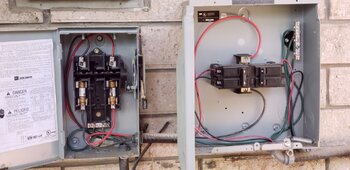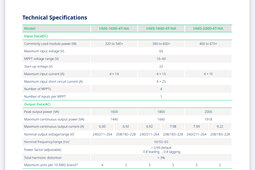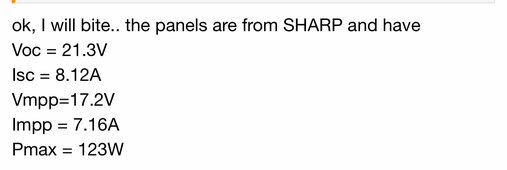6000/240*1.25 = 31.25 which rounds up to 35A breaker. You will need to upgrade the AC wiring to #8. Is the knife disconnect wiring and fuse already big enough? Should be big enough already for the 3300 watt original.
the "solar breaker" in the main panel is a double-pole 30A breaker and the wire looks like AWG 10. Each inverter was on a 15A breaker in the outdoors panel shown above.
The old Sunnyboys were perhaps 3kW each, or even just 2.5kW.. the original solar array has a max output of 40*123W = 4920W
The panels were originally all hooked up with AWG 12. When I relocated the array in 2020, due to the now longer run, I increased it to 10 AWG.
Based on inverter nominal rating, the calculation is 6000/240*125 = 31.25
Based on max pv output, it would be 5000/240*1.25 = 26.04A
Wouldn't a 30A breaker be enough? Keep in mind, I only measured ~95W per panel at noon on a sunny day in July.
The total output on the DC side is likely 3.8kW (after I replace the diode LOL) which means it's going to be 3700W on the AC side.
The real max current is then 3700W / 240 = 15.5A and after *1.25 .. a 20A breaker would actually suffice.
I'm just concerned if I change the AC wire from the inverter to the blade switch, then I also need to upgrade the solar breaker in the main panel from 30A to 35A. I really don't want to change these, in case someone from the PoCo ever looks at it. I can show them that I have the original input breaker (30A) and the original panels from 2004.
I was looking to rather buy a 6kW inverter instead of a 5kW model to keep the load as a % of max capability a bit lower.





